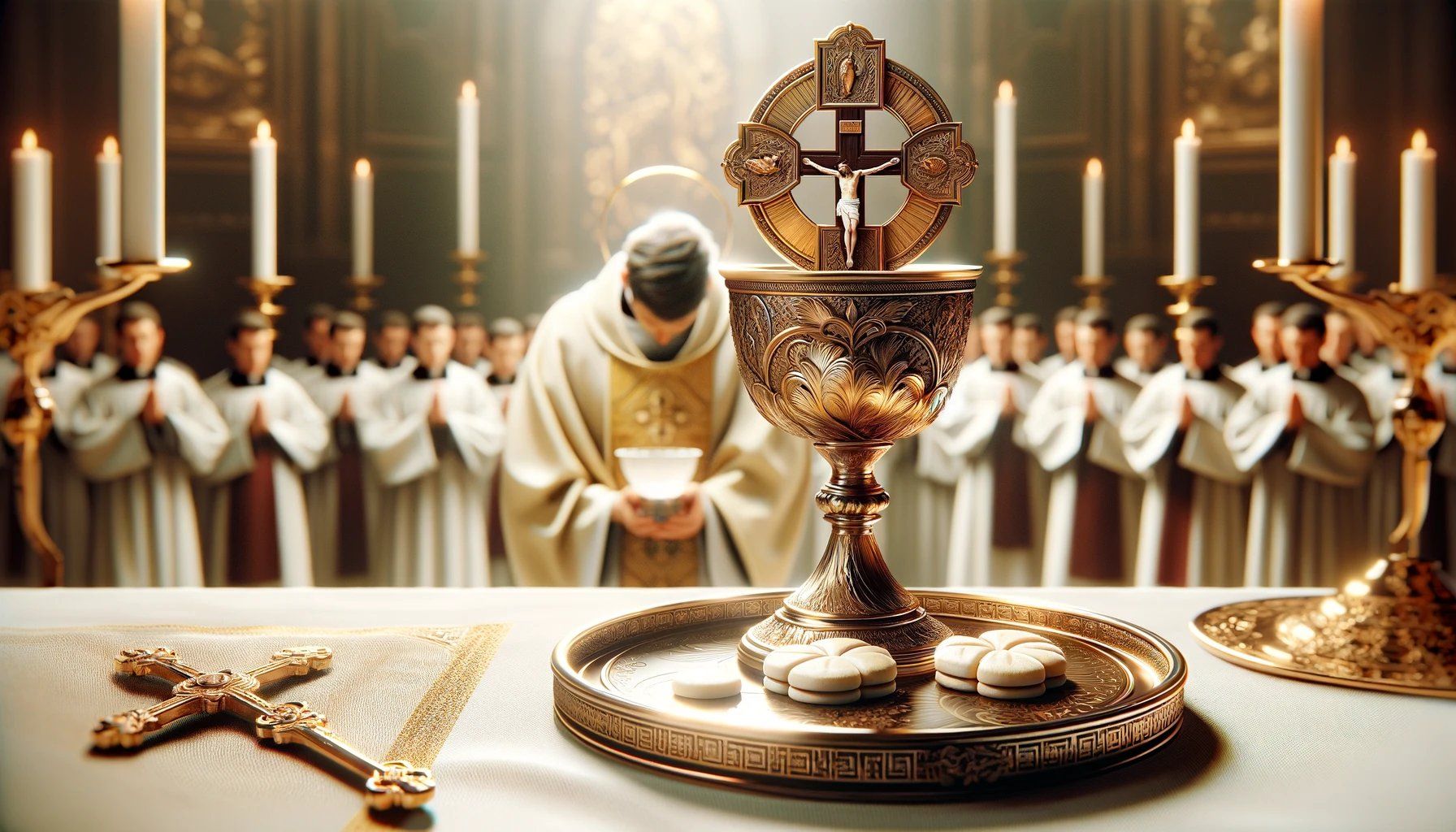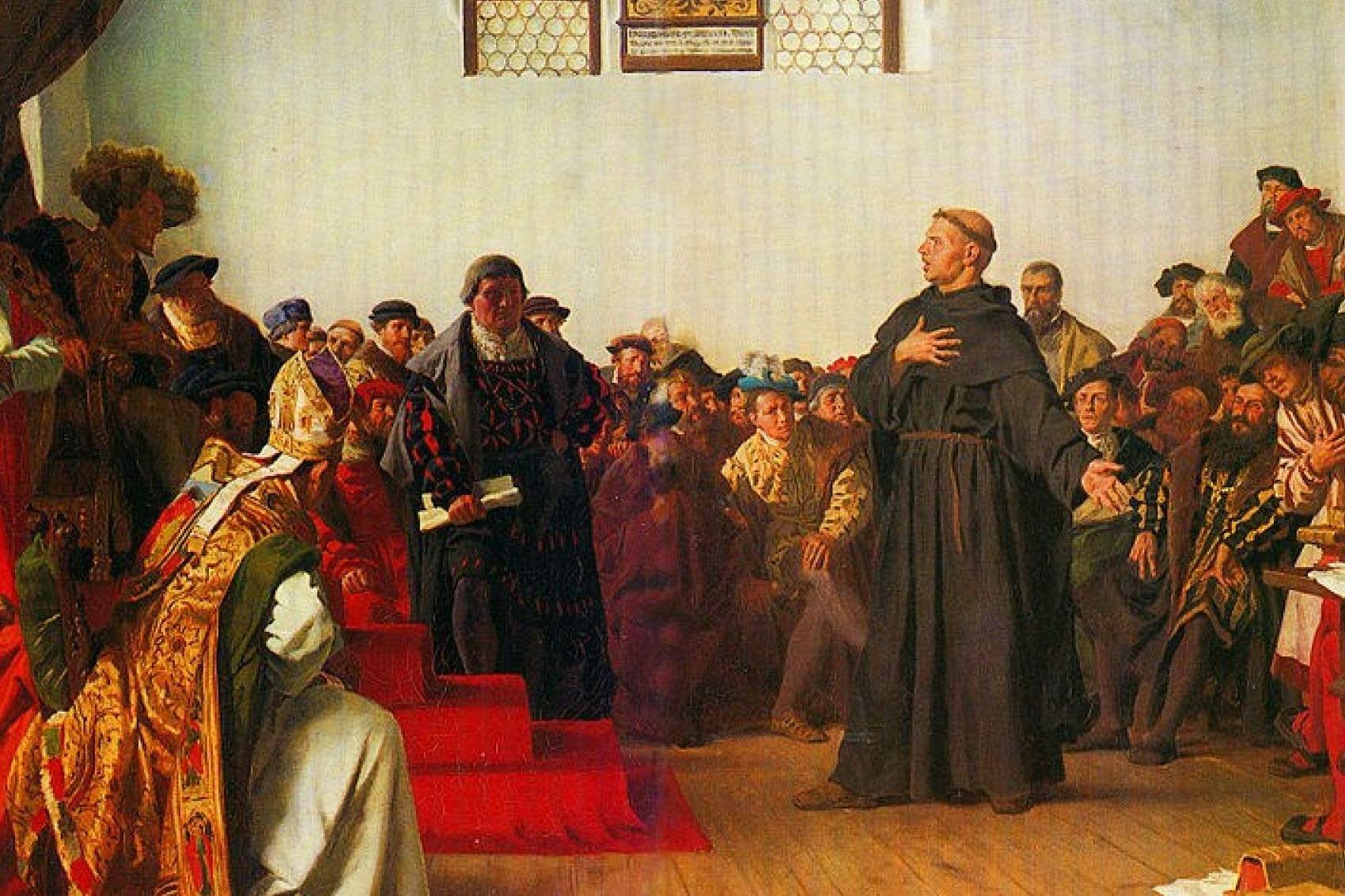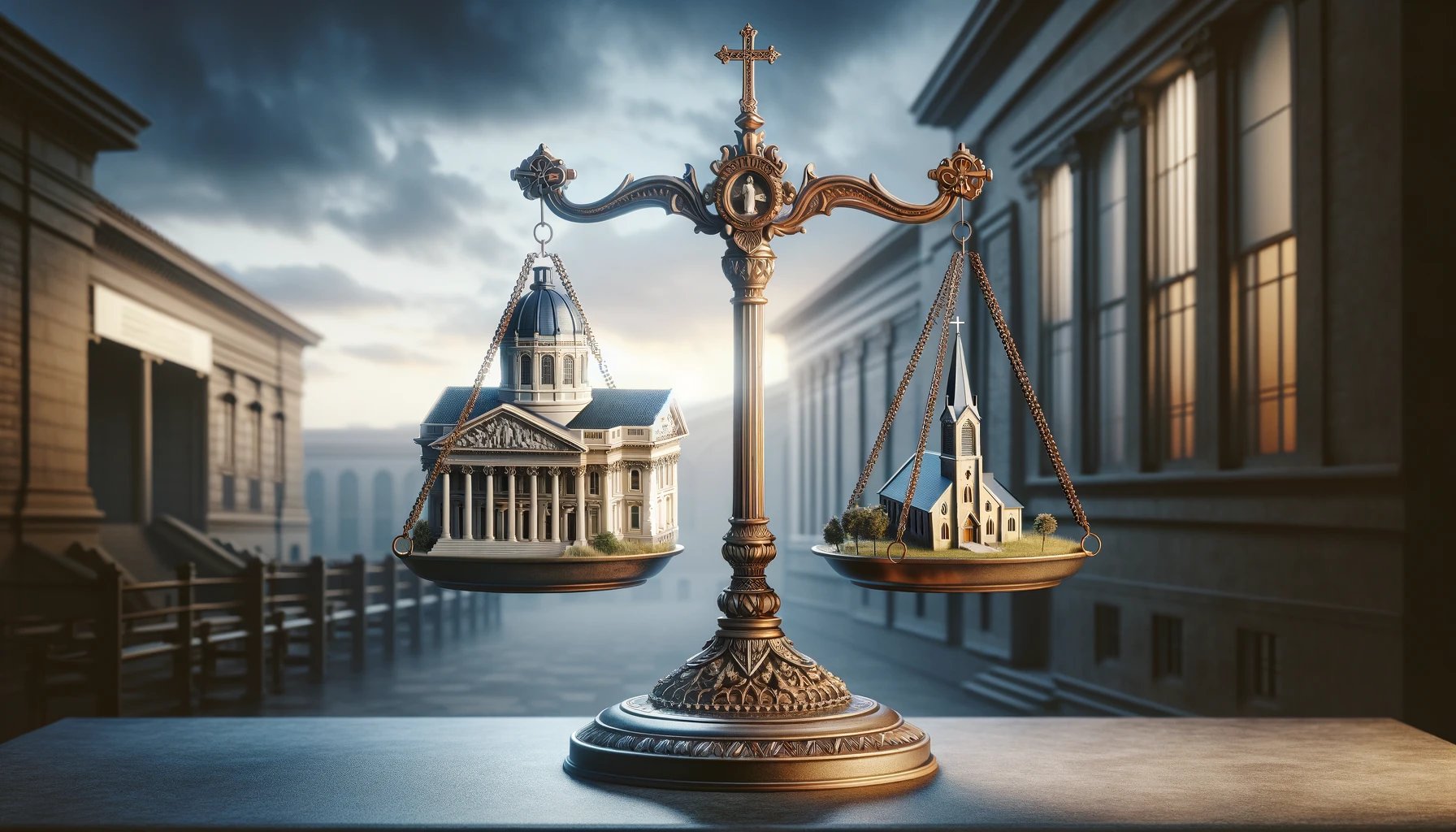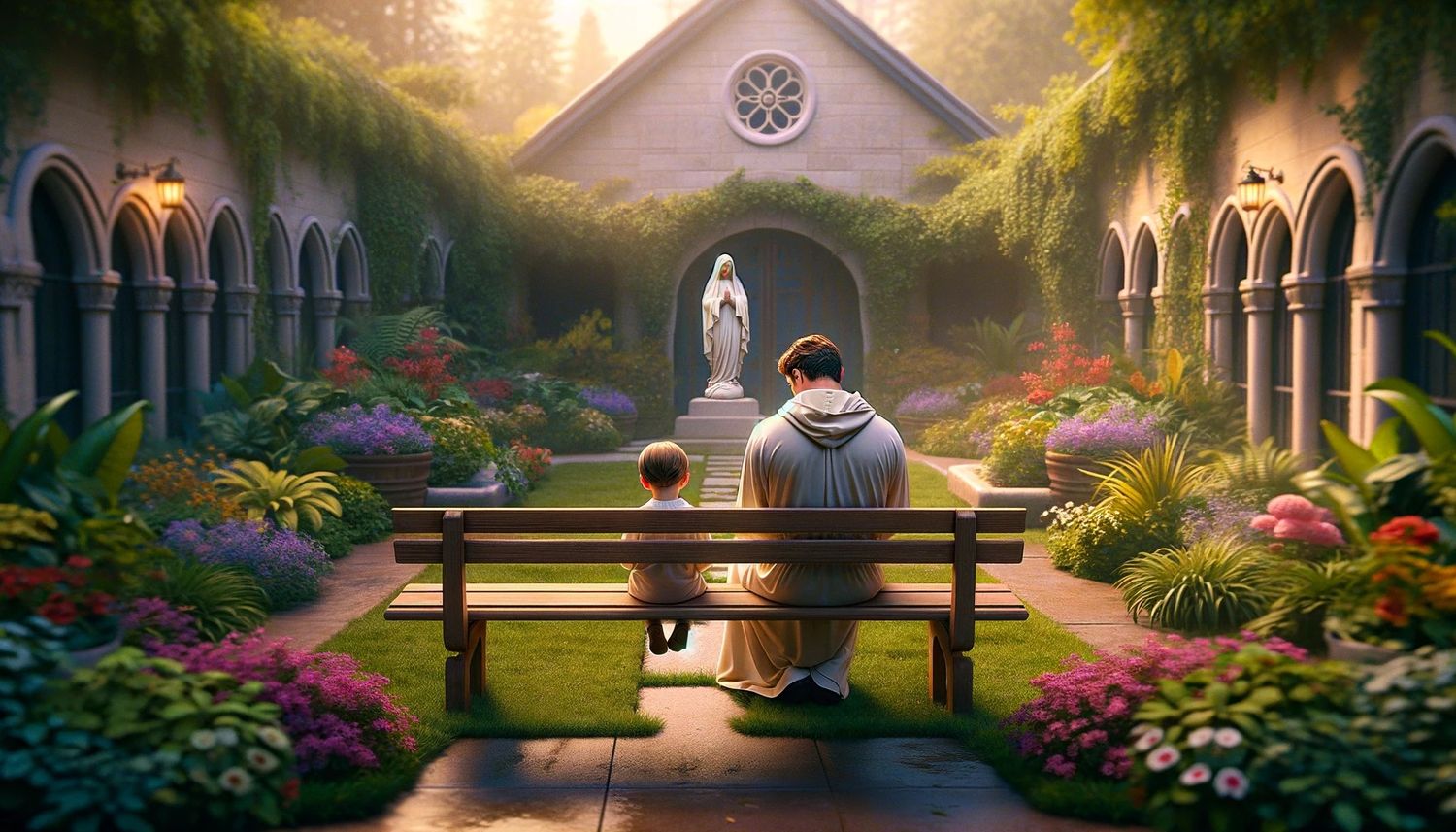Home>Theology and Spirituality>Who Was The Ruler Of Both The City-State Of Rome And The Catholic Church


Theology and Spirituality
Who Was The Ruler Of Both The City-State Of Rome And The Catholic Church
Published: February 12, 2024
Ericka Andersen, an editor at Christian.net, expertly merges digital strategy with content creation, focusing on faith and societal issues. Her communication skills enhance the platform's engaging narratives, fostering meaningful dialogue on belief's impact on society.
Discover the unique historical figure who held power over both the city-state of Rome and the Catholic Church. Explore the intersection of theology and spirituality in this intriguing dual role.
(Many of the links in this article redirect to a specific reviewed product. Your purchase of these products through affiliate links helps to generate commission for Christian.net, at no extra cost. Learn more)
Table of Contents
Introduction
The intertwining history of Rome and the Catholic Church is a captivating tale of power, influence, and spiritual leadership. At the heart of this narrative lies a unique figure who held the dual role of ruler of the city-state of Rome and the leader of the Catholic Church. This individual wielded both secular and religious authority, shaping the course of history and leaving an indelible mark on the world.
The story of this remarkable figure unfolds against the backdrop of ancient Rome, a city renowned for its military prowess, cultural achievements, and political intrigue. Meanwhile, the Catholic Church, with its rich traditions and profound spiritual significance, emerged as a formidable force in the realm of faith and governance.
As we delve into the annals of history, we will uncover the dynamic interplay between the rulers of Rome and the leaders of the Catholic Church. Their actions, decisions, and conflicts reverberated across the centuries, shaping the destiny of nations and leaving an enduring legacy that continues to influence the modern world.
Join us on a journey through time as we explore the early history of Rome and the Catholic Church, the rise of the Papal States, the dual role of the Pope as the ruler of Rome and the leader of the Catholic Church, the challenges faced by these dual rulers, and the eventual transformation of the Papal States, shedding light on the modern role of the Pope. Through this exploration, we will gain a deeper understanding of the profound impact of these dual rulers on the course of history and the development of Western civilization.
The Early History of Rome and the Catholic Church
The early history of Rome and the Catholic Church is a tapestry woven with threads of ancient civilizations, religious fervor, and political upheaval. Rome, with its legendary founding by Romulus and Remus, grew from a small settlement to a dominant force in the ancient world. Its strategic location, formidable military, and innovative governance laid the foundation for an empire that would shape the course of history.
Meanwhile, the Catholic Church, tracing its origins to the teachings of Jesus Christ and the apostles, began as a small community of believers in the Roman province of Judea. Over time, it spread throughout the Mediterranean world, gaining followers and enduring persecution before emerging as a prominent religious institution.
The convergence of Rome and the Catholic Church occurred against the backdrop of a changing world. As Rome expanded its influence, it encountered diverse cultures and belief systems, including the burgeoning Christian faith. The relationship between the Roman authorities and the early Christians was marked by periods of tolerance, persecution, and eventual recognition.
The early history of Rome and the Catholic Church is punctuated by pivotal events such as the conversion of Emperor Constantine to Christianity, which heralded a new era of acceptance and patronage for the Christian faith. This transformative moment set the stage for the Church to emerge as a significant spiritual and political force within the Roman Empire.
As the Roman Empire faced internal strife and external threats, the Church provided a unifying presence, offering spiritual guidance and stability in tumultuous times. The city of Rome, with its rich history and strategic significance, became the focal point of this evolving relationship, serving as the seat of both secular and spiritual authority.
The early history of Rome and the Catholic Church laid the groundwork for the complex interplay between temporal and ecclesiastical power that would define the centuries to come. This intersection of secular and religious authority set the stage for the emergence of a unique figure who would wield influence over both the city-state of Rome and the spiritual realm of the Catholic Church, shaping the destiny of Western civilization.
The Rise of the Papal States
The rise of the Papal States marked a significant chapter in the history of Rome and the Catholic Church. Emerging at a time of political upheaval and shifting power dynamics, the Papal States represented a unique fusion of temporal and spiritual authority under the leadership of the Pope.
The Papal States, also known as the States of the Church, encompassed territories in the Italian peninsula that were under the direct governance of the Pope. This distinctive political entity emerged as a result of the evolving relationship between the Church and secular authorities, particularly during the early medieval period.
The consolidation of the Papal States was influenced by a complex interplay of factors, including the decline of the Western Roman Empire, the spread of Christianity, and the emergence of powerful noble families in Italy. As the authority of the Roman emperors waned, the Church assumed a more prominent role in the governance of central Italy, laying the groundwork for the establishment of the Papal States.
One of the pivotal moments in the rise of the Papal States was the Donation of Pepin in 756, in which the Frankish king, Pepin the Short, granted territories in central Italy to Pope Stephen II. This act not only solidified the temporal power of the Papacy but also established the foundation for the territorial holdings of the Papal States.
Over the centuries, the Papal States expanded and contracted in response to political and military dynamics, often finding themselves entangled in the power struggles of rival city-states and foreign powers. The Papacy, as both a spiritual and temporal authority, navigated the complexities of governance, diplomacy, and warfare to maintain and expand its territorial holdings.
The rise of the Papal States represented a unique experiment in the exercise of dual authority, with the Pope serving as both the spiritual leader of the Catholic Church and the ruler of a significant political entity. This duality of roles positioned the Pope at the nexus of secular and ecclesiastical power, shaping the political landscape of medieval Italy and influencing the broader dynamics of European politics.
The establishment and expansion of the Papal States underscored the enduring influence of the Church in shaping the geopolitical realities of the time. This period of history laid the groundwork for the dual role of the Pope as the ruler of Rome and the leader of the Catholic Church, setting the stage for the challenges and triumphs that would define this unique position in the centuries to come.
The Dual Role of the Pope as Ruler of Rome and Leader of the Catholic Church
The dual role of the Pope as the ruler of Rome and the leader of the Catholic Church represents a remarkable convergence of temporal and spiritual authority. This unique position, shaped by centuries of historical, political, and religious developments, positioned the Pope at the intersection of secular governance and ecclesiastical leadership, wielding influence over both the city-state of Rome and the broader realm of the Catholic Church.
As the ruler of Rome, the Pope exercised temporal authority over the Papal States, a significant political entity in central Italy. The Papal States, with their territorial holdings and administrative structures, required the Pope to navigate the complexities of governance, diplomacy, and military defense. The Pope's role as a secular ruler involved making decisions on matters of law, administration, and the welfare of the Papal subjects, reflecting the multifaceted responsibilities inherent in governing a territory.
Simultaneously, the Pope served as the leader of the Catholic Church, guiding the faithful, interpreting doctrine, and shaping the spiritual direction of the Church. This role encompassed pastoral duties, theological leadership, and the proclamation of the teachings of the Church. The Pope's spiritual authority extended beyond the boundaries of the Papal States, reaching the hearts and minds of believers across the world, reinforcing the global significance of his leadership within the Catholic Church.
The dual role of the Pope as the ruler of Rome and the leader of the Catholic Church necessitated a delicate balance between temporal and spiritual concerns. The Pope's decisions and actions reverberated across both realms, influencing the lives of his subjects and the broader Christian community. This duality of roles underscored the complexity of the Pope's position, requiring astute leadership, diplomatic acumen, and a deep understanding of the interplay between secular and religious authority.
Throughout history, the dual role of the Pope as the ruler of Rome and the leader of the Catholic Church has been marked by moments of triumph and challenge, as the demands of temporal governance intersected with the spiritual responsibilities of shepherding the faithful. This unique position continues to shape the modern role of the Pope, reflecting the enduring legacy of a leader who navigates the complexities of both earthly and heavenly realms, leaving an indelible mark on the course of history and the development of Western civilization.
The Challenges Faced by Rulers of Both Rome and the Catholic Church
The rulers of both Rome and the Catholic Church faced a myriad of challenges stemming from the complex interplay between secular and ecclesiastical authority. This dual role, while imbued with power and influence, also brought forth a host of formidable obstacles that tested the leadership and resilience of those who held this unique position.
One of the foremost challenges was the delicate balance between temporal governance and spiritual leadership. The rulers of Rome, in their capacity as the heads of the Papal States, grappled with the intricacies of administering a territory while simultaneously fulfilling their spiritual duties as the leaders of the Catholic Church. This dual responsibility demanded a nuanced approach to governance, requiring the ability to navigate the practical realities of political rule while upholding the moral and ethical precepts of the Church.
Furthermore, the rulers faced the constant pressure of maintaining the integrity and stability of the Papal States amidst the ever-shifting political landscape of medieval Italy. Rival city-states, ambitious noble families, and external powers vied for influence and control, posing significant challenges to the rulers' efforts to safeguard the territorial holdings of the Papacy. Diplomatic finesse, military strategy, and astute governance were essential in navigating these complex power dynamics and preserving the autonomy of the Papal States.
In addition, the rulers of the Catholic Church encountered the formidable task of shepherding the faithful and upholding the doctrinal purity of the Church while simultaneously attending to the demands of secular governance. The spiritual and pastoral responsibilities inherent in leading the Catholic Church required unwavering dedication amidst the tumult of political maneuvering and territorial defense. The need to address theological disputes, guide the faithful through periods of upheaval, and uphold the moral authority of the Church added layers of complexity to the already demanding role of the rulers.
Moreover, the dual rulers faced the challenge of reconciling the often conflicting demands of temporal power and spiritual authority. The complexities of governance, the pursuit of political alliances, and the exigencies of statecraft sometimes intersected with the ethical and moral imperatives of the Church, creating tensions that required deft navigation and discernment.
The challenges faced by the rulers of both Rome and the Catholic Church underscored the intricate nature of their dual role, demanding a multifaceted approach to leadership that encompassed governance, spirituality, diplomacy, and the preservation of the Church's moral authority. These challenges, while formidable, also served as crucibles that shaped the enduring legacy of those who held this unique position, leaving an indelible mark on the course of history and the development of Western civilization.
The End of the Papal States and the Modern Role of the Pope
The end of the Papal States marked a significant turning point in the history of the dual rulership of Rome and the Catholic Church. The 19th century witnessed a series of transformative events that ultimately led to the dissolution of the Papal States and the reconfiguration of the Pope's role in the modern era.
The rise of nationalism and the unification of Italy posed formidable challenges to the temporal authority of the Papacy. As the Italian peninsula underwent a process of consolidation and the emergence of a unified Italian state, the territorial holdings of the Papal States came under increasing pressure. The forces of Italian unification, led by figures such as Giuseppe Garibaldi and Count Camillo di Cavour, sought to bring the various Italian territories under a single sovereign authority, thereby challenging the sovereignty of the Papal States.
Amidst these seismic shifts, the Papal States faced military confrontations and diplomatic pressures, culminating in the capture of Rome by Italian forces in 1870. This event marked the effective end of the Papal States, as the temporal authority of the Pope was confined to the Vatican City, a small enclave within Rome. The loss of the Papal States represented a profound transformation in the political landscape of Italy and the role of the Pope as a temporal ruler.
The modern role of the Pope, following the end of the Papal States, underwent a redefinition that emphasized the spiritual and global dimensions of the papacy. Freed from the complexities of temporal governance, the Pope assumed a more pronounced role as a moral and spiritual leader, transcending the confines of a specific territorial domain. This shift allowed the Pope to focus on the universal mission of the Catholic Church, engaging with global issues, promoting peace and justice, and advocating for the rights and dignity of all people.
The modern Pope, while no longer a temporal ruler in the traditional sense, wields influence on the world stage through pastoral visits, diplomatic initiatives, and advocacy for social and environmental causes. The papacy's moral authority and ethical guidance continue to resonate across diverse cultures and societies, reflecting the enduring impact of the Pope as a spiritual leader with a global reach.
The end of the Papal States thus heralded a new chapter in the modern role of the Pope, emphasizing the universal and transcendent nature of his leadership. This evolution underscores the enduring relevance of the papacy in shaping the moral conscience of humanity and contributing to the pursuit of peace, justice, and solidarity in an ever-changing world.














